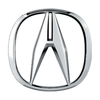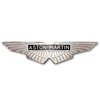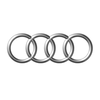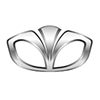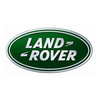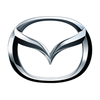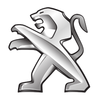everything you need to know about buying new wheels
Shopping for new wheels can be frustrating if you are not equipped with the important information you need to know. Regardless if you are new to the market, or if you just need clarification, this guide is designed to walk you through the wheel buying process. The easiest option for installing new wheels on your vehicle is to choose rims from a shop that can install tires for you. This takes out the guess work, and all you have to do is choose from the options that they provide for you. If you choose to purchase wheels elsewhere, and have them installed later, you are going to need to know a few details about the wheels you are shopping for.
For Beginners
Not everyone specializes in ’car stuff’, and that is fine. For those who may not know how to speak ’shop’, this is for you. If you are shopping for ’wheels’, then you are shopping for ’rims’. You will likely hear these two terms while on your search, so know that they mean the same thing. The rim is where you mount the tires, and it is what you use to attach the tire to the vehicle. Rims or wheels come in many designs, colors, and sizes. If you want or need new wheels, then you have a couple of decisions to make. For starters, the manufacture of your vehicle chose a wheel size based on its design, and for most applications this is the perfect size. You can typically choose from many types and designs of rims in that exact size, known as the ’stock’ wheels. You can also put larger or smaller wheels on the vehicle, within reason. Most people put larger tires on their cars, but there are known benefits to downsizing as well.
Increasing Your Wheel Size
If you want to increase the size of your wheels, there are two ways you can do this. The first option is to make the wheel wider, and the second is to make the wheel taller. Both will increase the amount of tire that touches the road and will give you more grip. You are going to be making most of your decision based on height of the tire, as width is slightly less important for most. There can be downsides to increasing the wheel and tire size too much, so you want to stay within the vehicle’s given allowance unless you want to make major suspension upgrades as well.
Decreasing Your Wheel Size
Some may downsize their tire size for appearance, but most do it for seasonal purposes. Heavy duty snow tires are not only more expensive the bigger they get, but wider is not always better on icy roads. One major reason drivers choose to purchase a new set of wheels/rims is to have a separate set for bad weather. It is a well-known trade secret that having a set of winter tires is a great investment and can save you money in the long run. To amplify the value of that winter set, you can purchase a slightly smaller rim, which will save you money that you can then invest in a better-quality winter tire. Crash tests have also verified that a narrower wheel and tire perform better on ice.
Plus-sizing?
Plus-sizing means buying a taller rim and compensating with a shorter tire to keep your needed clearance. The total height of your wheel plus the tire will dictate how much clearance you have between your tires and the wheel well, fenders, and suspension components around it. In order to maintain a proper clearance, you have the option to buy a lower profile tire to compensate for a buying a taller rim. This is the appropriate option for anyone who does not want to upgrade their suspension to compensate for a taller overall set up. If you do not want to purchase a lower-profile tire or upgrade your suspension, you will have to keep the rim/wheel size close to stock size.
What Is My Wheel Size?
There are several measurements you are concerned with when it comes to buying wheels/rims. These measurements are much more important if you plan on purchasing rims on your own, without the assistance of a professional.
Diameter- This is diameter, in inches, of just the wheel, minus the tire. You will often find this number in a ratio that includes the width as well. EXAMPLE: 6.5x16 Width- This is the width, in inches, of the wheel without the tire. You will often find the number in a ratio with the diameter like listed in the example above.
Offset- Less important but still a factor, offset is the measurement, in millimeters (mm), of the distance between the center of the wheel and the mounting surface (where the tire is ’beaded’).
Bolt fitment and pattern- The bolt fitment and pattern describe the distance between and location where the lug nuts will go.
Where Can I Find My Wheel Size?
If you do not know what size your rims are, you can look up or piece together needed information. First, your owner’s manual will have detailed tire and wheel information. Secondly, you can always contact a tire specialist who can look that information up for you. There are also websites where you can look up this information. This is of course, information for stock wheels and tires, as well as assuming you have stock suspension components.
The tires on your vehicle will tell you the diameter of the wheel/rim, which is encoded in the tire’s sidewall information. Find the measurement that is formatted like such: P185ኢ/R15. The ’R15’ indicates that you would have a 15-inch wheel/rim, and that the tire’s inside diameter is designed to fit this diameter of wheel.
Potential for Problems
Dramatic Changes- Increasing or decreasing wheel/rim size beyond a certain point can damage the vehicle. The odometer, speedometer, transmission, traction control systems, and any other sensors present depend on settings and a design set by the manufacture. All of the systems listed above can suffer in various ways if the size of the tires and wheels is changed dramatically. Bolt Patterns- You cannot put any rim onto any vehicle, even if they are the correct size. There are bolt patterns that differ, and you must buy wheels that are meant for your vehicle.
Pros
You can upgrade and dramatically change the look of your vehicle with new wheels, and it is very easy if you choose a stock-sized rim or close to it.
Winter and summer tires are cheaper to store, maintain, and swap when they are mounted on their own wheels. Plus-sizing or upgrading in size will not harm the vehicle when done correctly.
As a general rule of thumb, you can increase and decrease your vehicle’s wheel size by one inch without any issues with clearance or mechanical fault.
Shorter and wider tires increase acceleration and stopping power, as well as help with handling.
Cons
The larger the tire size, the more expensive the vehicle is to maintain, fuel, and insure.
Plus-sizing takes away tire depth, which can make for a rougher ride and more stress on your suspension components. Larger and more expensive tires are more expensive to replace or repair.
Taller tires mean a higher risk of rolling over and can cause handling to become difficult.
Wider wheels are more likely to rub if not sized with respect to the vehicle’s design.
A Quick Review
New wheels can make a world of difference to your vehicle. For that reason, you want to make sure that new wheels are chosen and installed correctly. Make sure you are selecting the right size for your vehicle and know your options so that you can choose the best one. Avoid upgrading in size too dramatically, and speak to a professional if you have any questions.


